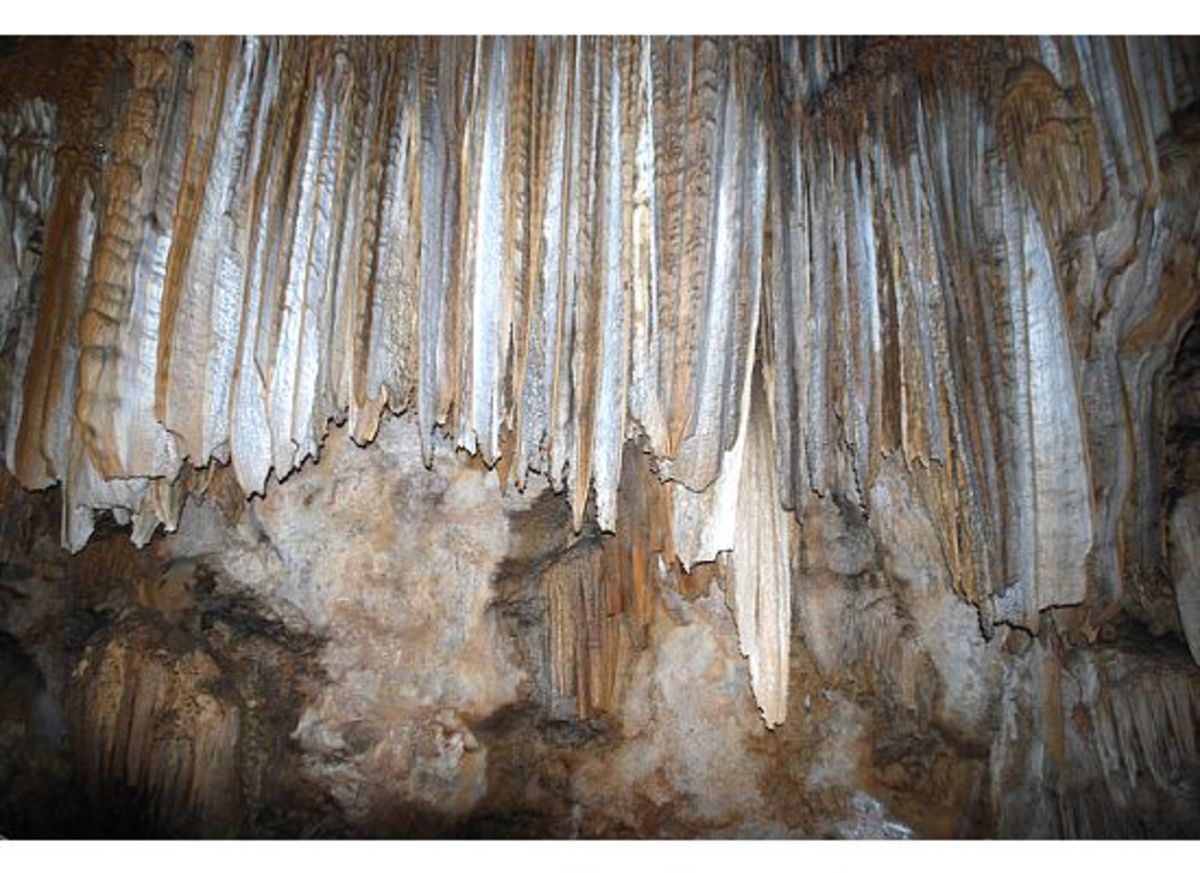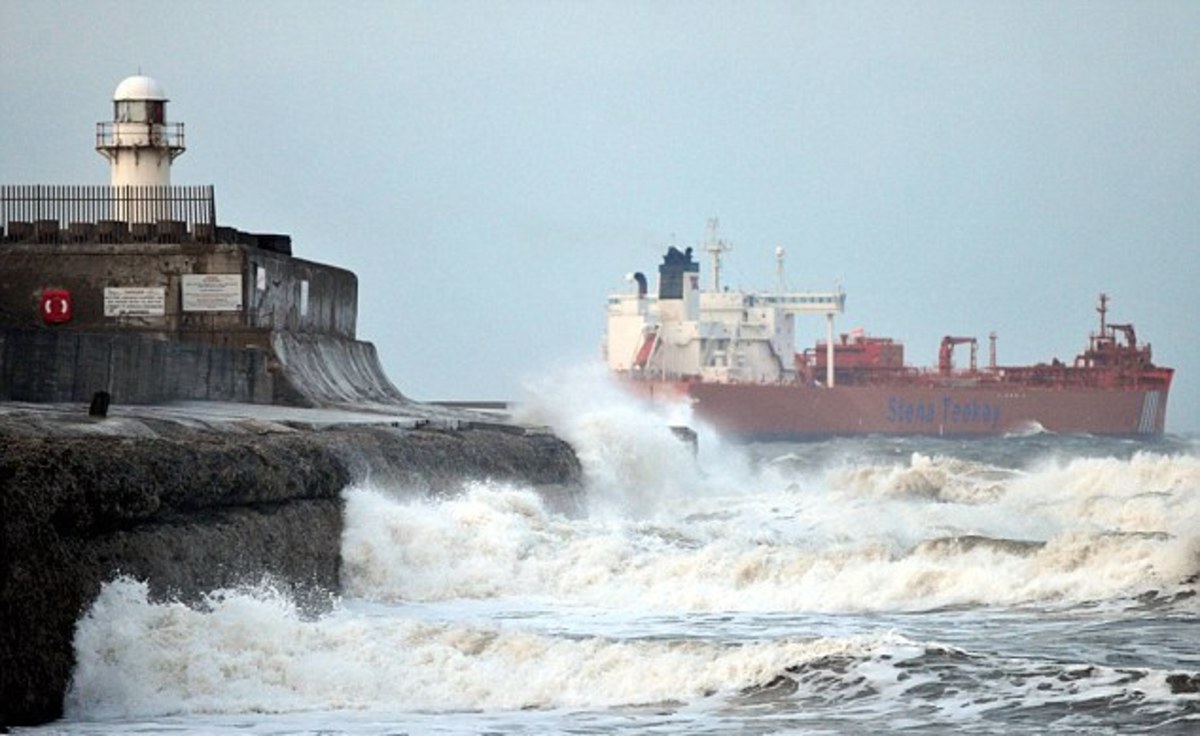Heritage - 56: High Beech In All Its Autumn Glory
Autumn flames in Epping Forest...the way the media sees it...
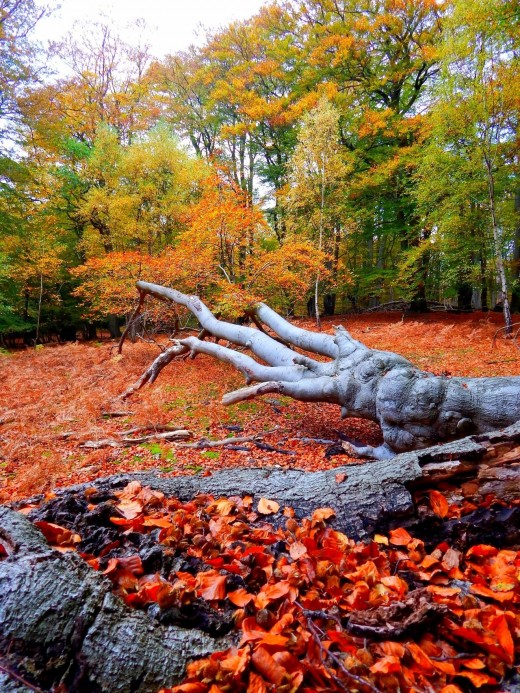
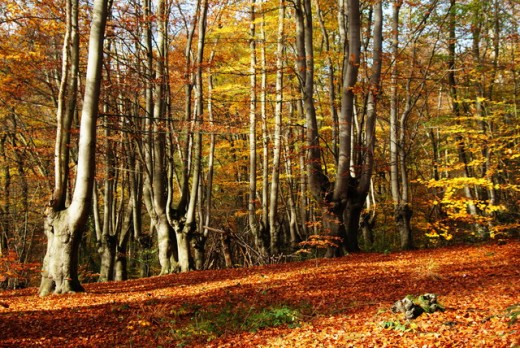
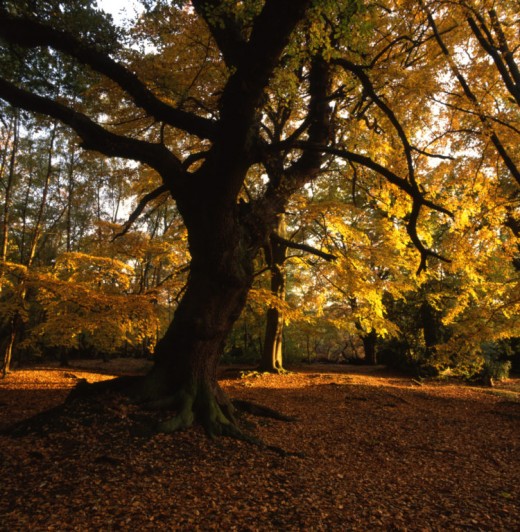
Colour abounds. Tree foliage has just begun to turn and leaves to drop. It's later in the year nowadays before the 'shut-down' starts, although once it does start the scene changes quicker. Late October-November winds will accelerate the sequence but in early- to mid-October there's respite. Some trees' leaves don't start to change colour, let alone shed before late October. Deciduous forests display a great variety of colour until all the leaves turn brown on the ground and winter surges like a Titan, to grip the land for almost four months.
Enjoy the variety at any rate until the colours fade and grey or dark brown take over in November. By Guy Fawkes' Night (November 5th) and the Lord Mayor's Show (the Saturday of the following week, along with Remembrance Sunday - nearest to November 11th) the Forest is frequented at weekends or by hardy stalwarts. Sometimes the weather surprises us with bright sunshine, shortening dry days with little warmth. A time for scarves and gloves. Car parks fill at weekends for a few hours whilst the snack huts and King's Oak cafe open (9 am until 4 pm), then darkness creeps over us and only the public houses do any business in the area.
Sometimes blustery winds bring the creaking noises of trees fighting to stay erect. The wind groans over the topmost branches, snapping some off and showering the ground with broken wood fragments. With autumn rains comes a renewal of sorts. Rivulets trickle down the hillside and unite in streams. Areas of flat ground that were marshy and dried up in summer turn boggy. Stout footwear is called for to negotiate the slopes. On wet days the trees hide whatever light there is behind heavy cloud. Yet now and then weak sunshine breaks through the clouds to pinpoint a particular tree or bush, light it up as if aflame for you to take a picture. It can work like that. Unless you're one of the pessimists who tells themselves, "Behind every silver lining is a cloud..."
Can't do much for you in that case. This page is for optimists only.
Leaves have begun to redden and drop...
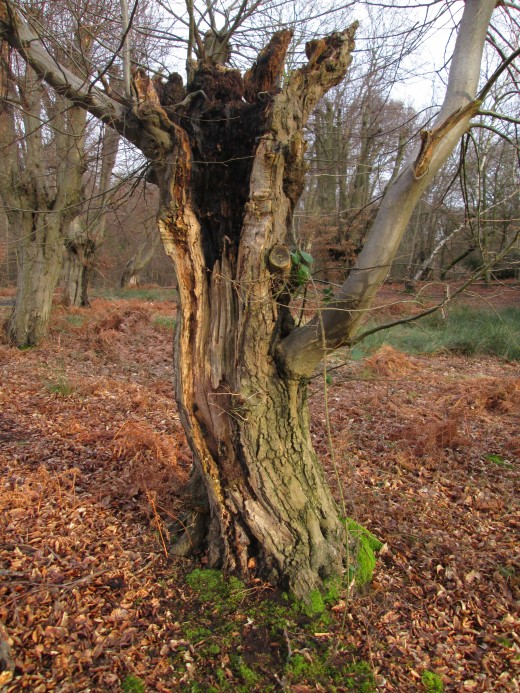
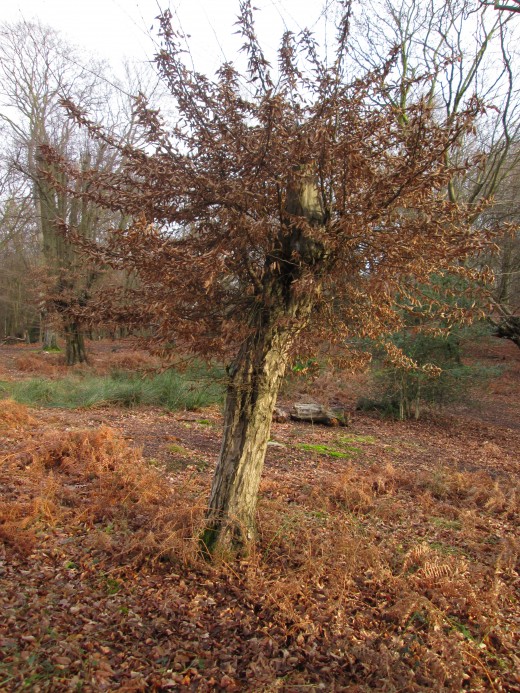

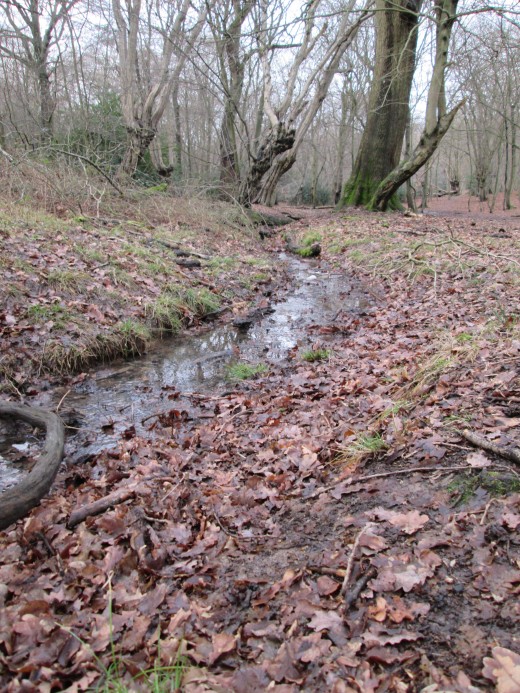
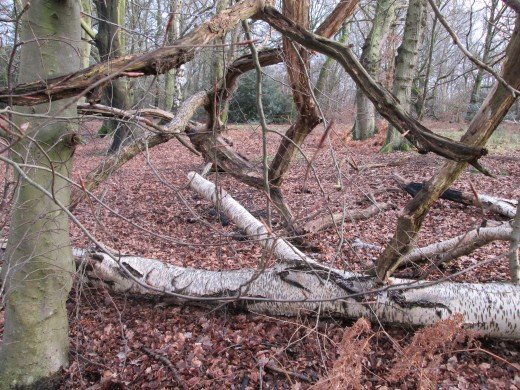
By late October, early November the autumn gallops to its inevitable goal. Winter's on its way. The trees lose much of their foliage during autumn winds from the north-west and especially from the east or north-east off the North Sea via Norfolk and Suffolk (less than 70 miles to the east coast, a day trip away). It's time for Mother Nature to begin the shut-down procedure. The last of the reds and deep yellows is blown down to the forest's carpet. Nature's Axminster* piles up around the stumps of trees and dead trunks. The golfers are out on the course near the Duke of Wellington on Wellington Hill in their quaint 'uniforms' with brightly coloured caps and sweaters (something else the Scots have bequeathed us), steeled to autumn's blusters. Benches and tables outside the various public houses are wetted by autumn squalls, and the hardy can be seen drinking from their card cups at several locations in the neighbourhood (Carl's and Brad's huts - green-painted converted shipping containers - and the cafe next to the King's Oak with its inside seating for the less hardy).
Of course there are days that look hopeless even for the hardiest of the forest's frequenters. We won't let that get us down... will we.
What's where and how to get there...
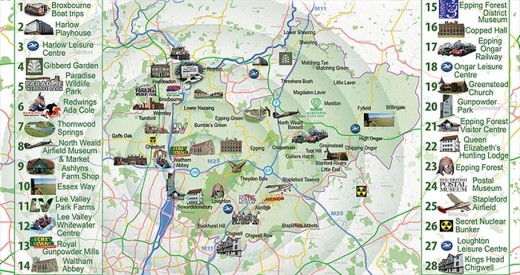
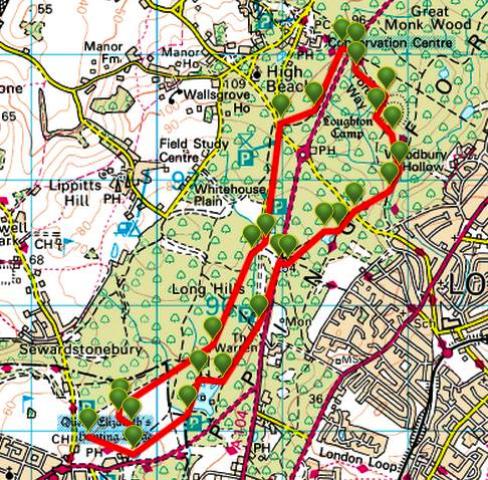
The canopy bared...
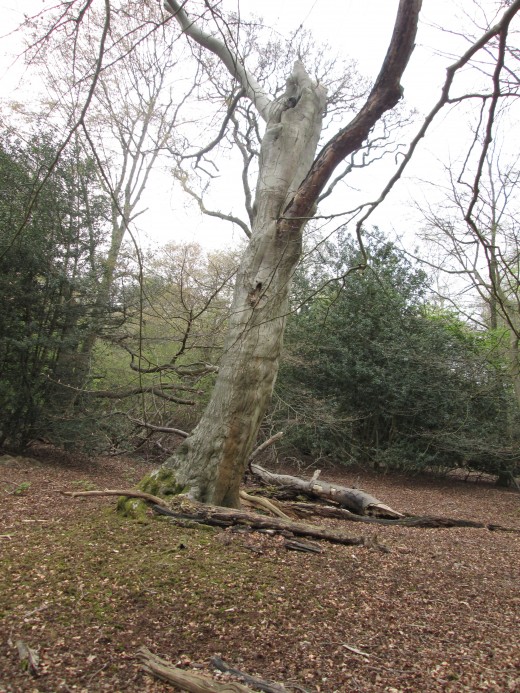
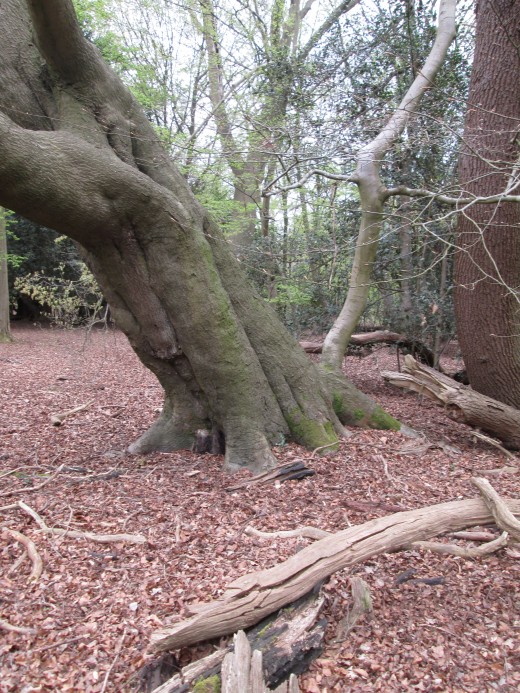
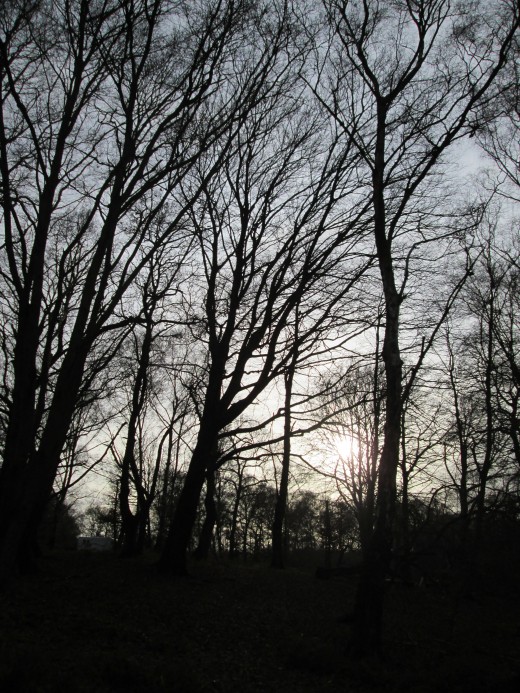
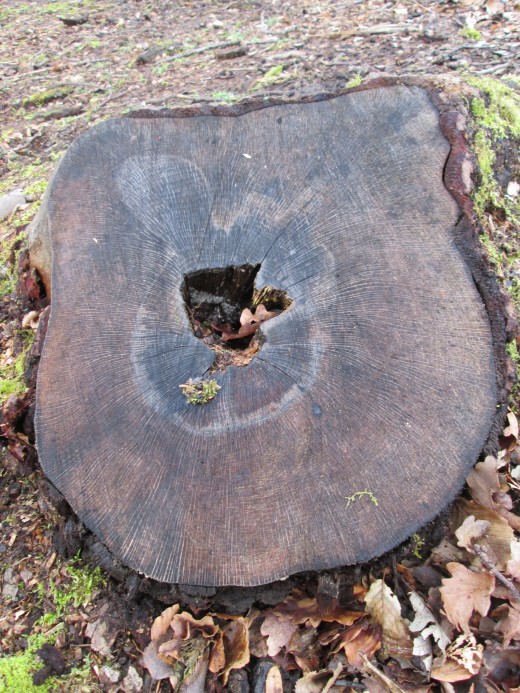
All good things come to an end... well, nearly all... and summer's one of these things. Autumn (the Fall) follows with all its own colours, but even that is finite. A long gap bridges autumn and spring, where this trio of pages started in winter. It's a gap that allows regeneration for the trees, ferns and thorns. To many, November sees the onset of an annual, depressing bleakness. You have to put negative thoughts aside. As I said it's a time of regeneration, the sap sits dormant at the roots, at times covered by ice and snow until by early March you can sense the imminent re-emergence. The cycle turns, the seasons advance and before you know it's spring again, early flowers emerge and a new season brings a resurgence of welcome colour. Visitors are more cheerful with a ready smile. (You never know who you might see, such as my namesake Rod Stewart's wife Penny Lancaster with her father looking across to North London from near Carl's hut).
The mere...
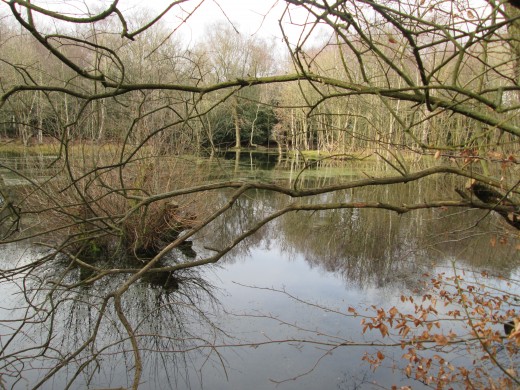
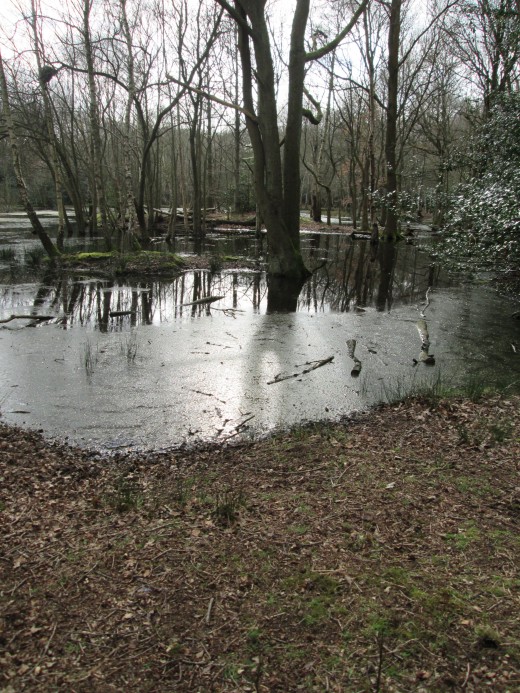
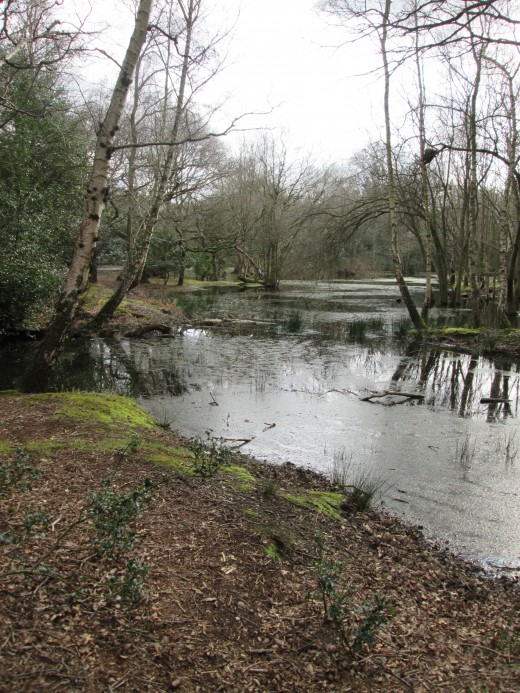
The mere in flood in these pictures has been a lot emptier, bedraggled, weed-infested, and at the best of times looks abandoned. There's a small reservoir on the far side of the ice house, behind the trees (see below), maybe there's an underground outlet from there to prevent flooding at the reservoir, although you can't see inside - unless you've got authorised access - and maybe the mere once served a purpose for the local community. It's central in the area, with residential and business properties around between High Beech a short way to the north of here and the base of Wellington Hill to the west, Lippitt's Hill to the south-west with its houses and school.
Late in the year you might see ducks waddling on the ice from the mere's shore to get to the water. The sun doesn't always shine and the ice stays, sometimes thickening with successive cold nights. Other water fowl tend to head for the more open water of the reservoirs a few miles to the west in North London, although some coots or moorhens hang around optimistically. They'll have this mere to themselves at times when even the ducks forsake it. That's one advantage of having wings. You can take yourself off as the need arises. The roads are busier than the feathered air routes below five hundred feet over the forest.
Ours is an ice house, ours is...*
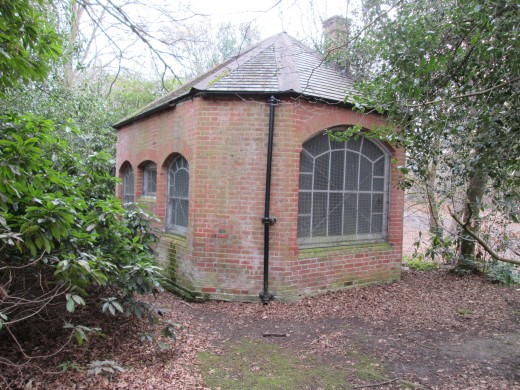
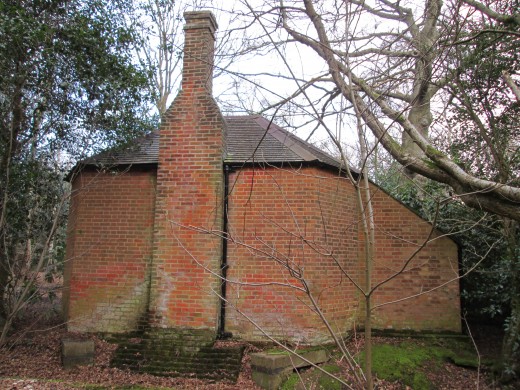
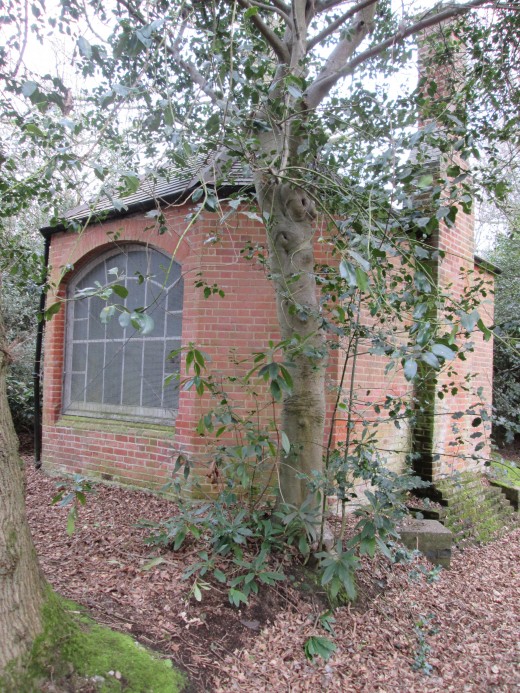
I've taken pictures of this ice house before as any of you will know, who have read earlier pages in the 'Heritage' series where I've traced a route along a bridle path from the Waltham Abbey road near the Wakes Arms roundabout. It's an enigmatic little building that's looked after, although by whom... Anyone know? The brickwork and guttering are kept in good shape, and the large windows don't seem to have been targeted by vandals even though it's not gated and guarded by high fencing.
---------------------------------------------------------------------------
* There was a mild TV sitcom that used the refrain, "Ours is a nice house, ours is".
© 2019 Alan R Lancaster






